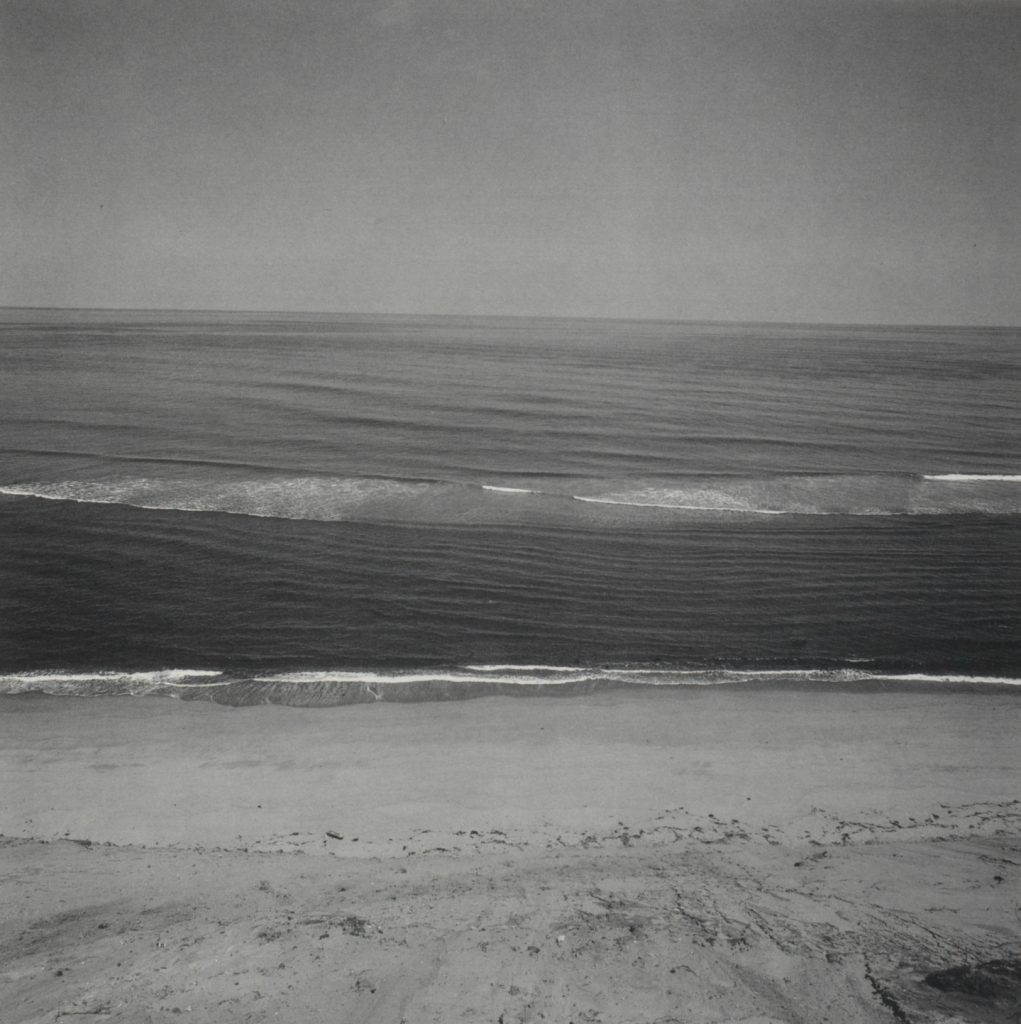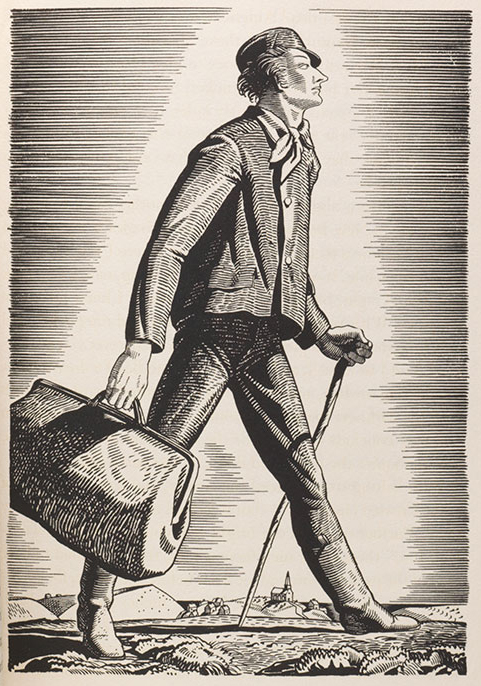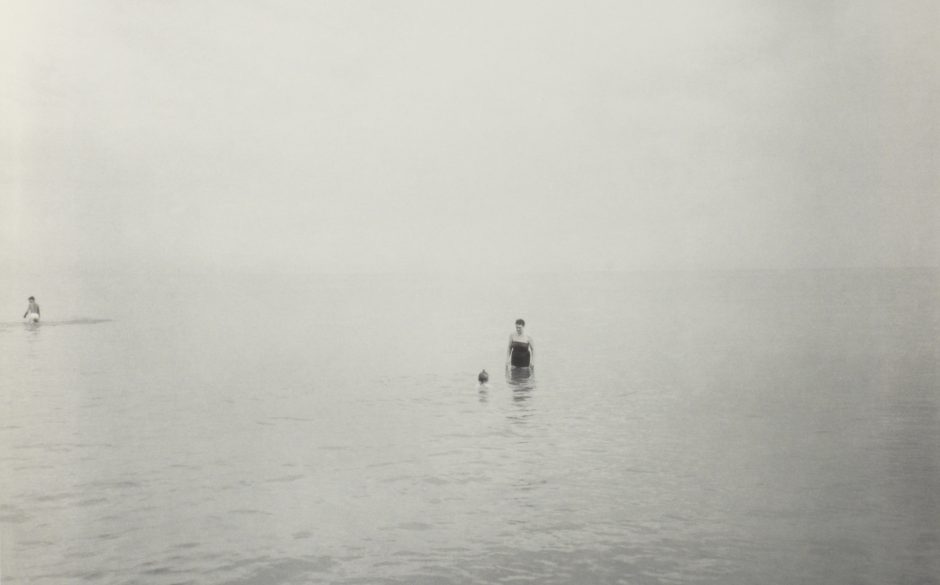The Jersey Shore was my beach. If you can imagine New Jersey as a woman sitting with her legs crossed, I grew up where the calves are. We chased the summer on the boardwalks, the low waves, wide beaches and neon nights between Cape May and Sandy Hook.
After thankless games of Skeeball and empty flirtations with arcade boys we usually ended the day reading on our blankets. Those books, like firefly light, did not last very long. One summer, to be exact.
We did not have a beach house – we had a teenage-weary 1969 Mustang.
Here’s to moving on and how to have a place for books at the beach. A library at your beach house.
[Image above and below: Taken from Water’s Edge by Harry Callahan, a first edition collection featuring his Beach Series photographs.]
Remember, the salt air and extremes of climate are no friend to paper. My strong suggestion is to leave your first editions out of the equation.
Instead, if you own a beach home, stock up on visually appealing paperbacks or cheap vintage copies of great books you already possess or may wish to revisit. Visit library sales and buy beautiful copies of books you may wish to start collecting. (Public libraries could use the money.) Too often, those wishing to collect are unsure where they will start or go next. A fun, reading library is a great place to feel that spark of connection with new titles and sample new collecting areas. If you are interested in collecting rare botanical books, invest in some beautiful reprints that can live safely at your beach house.
If you have the luxury of a good amount of space, pick an inviting room or space (no southern exposure) for your books. Most beach homes today are built with storage but in the past, the easy beach life precluded a great amount of shelving to conserve space. Books at the beach live best where you think you will lazily reach them. Informality is rule one at the beach. A nice shelf over or next to the bed. An eclectic bookcase next to the couch.

If you insist on some rare titles then you should invest in a dehumidifier and some very good shutters to both manipulate the sun and to allow air to circulate naturally through the room. Dry air conditioning and cooling units can ultimately do as much damage as humidity, mummifying the bindings and the glue found behind the spines of most modern books. Try to strike a balance (or a bargain) with the beach environment. If you are feeling very uncomfortable, so are the books, and it is time to turn on the dehumidifier or the cooling system. If, for instance, at night, it tends to get a bit cooler or you have a few dry days, by all means let some air inside. Circulating air is the enemy of mold and fungus. Make sure that the books do not sit for years (or even a year) without being opened and appreciated. Dust and check yours books regularly, inspect the interiors and exteriors for signs of micro-invasions. (Yes, this includes smelling them.) Make sure your modern editions have protective Mylar over the dust jackets. At least once a year, apply leather conditioner to leather bindings. (You should be doing both anyway, regardless of where you live.)
And since we are at the beach house, perhaps the books can reflect the atmosphere. You, as the curator, must decide if this personal space is a place to catch up on serious reading or a place for taking a moment away from all the barging guests and entertainment demands that having a vacation home ironically brings. This may be the place you finally read all of Ian Fleming’s “Bond” titles or try and finish “Finnegan’s Wake” (good luck).
At BRB, we send you catalogs. Take them to your beach getaway where you can finally study them in peace. (We know they can be complex.) Cheap reader’s copies of most of the books we offer are available through websites like Dover publication’s “Thrift Editions”. These great, affordable reader’s copies might awaken a new collecting interest at little cost! (Imagine that.)

This is a great opportunity to find that reprint of “Moby Dick” and finally see what all that literary hot fuss is about. A slow week at the beach is an excellent time to read John Esquemeling’s, “Bucaniers of America”. Or consider taking some poetry to the beach. Emily Dickinson needs to get out of the house.
And for those lit majors, Penguin Classics creates beautiful, colorful hardcover books. The assortment is small but affordable and surprisingly good ranging from Jane Austen to Bram Stoker.
If you are taking kids to the beach, don’t forget that there will be plenty of “down time” so fill up a section of the library with hardcovers of classic children’s books (many classic children’s titles have changed little from their initial appearance). You won’t be worried that they are trashing something irreplaceable while still giving them a “real” book to huddle with on those inevitable rainy beach days. No fighting over the Kindle.
So much is currently being said and written about how we now read – this is an excellent opportunity for you to teach your kids how to handle and maintain authentic books. The small, palm-sized books of Beatrix Potter, for example, can be found reprinted in their original, adorable format.
With some planning, you could create a very fine reading library with facsimile copies of great books giving you and your family and friends an appreciation of the curating culture. And you can keep them at the beach! Now is the time to baffle your complacent bookseller with a new collecting arena.
“She’s into say what now?” (Cue the thousand-yard-stare of your rare bookseller.)
Meanwhile, if you have any questions, you know where to find me.


